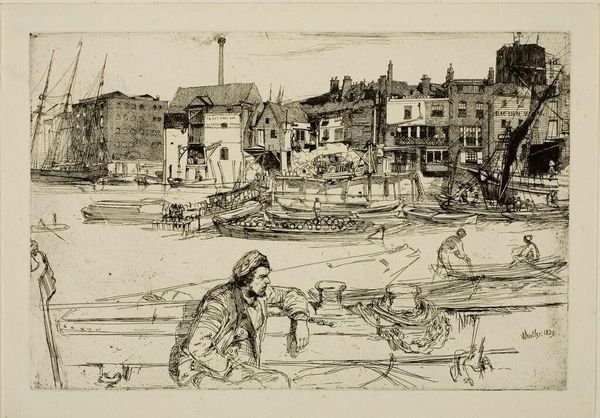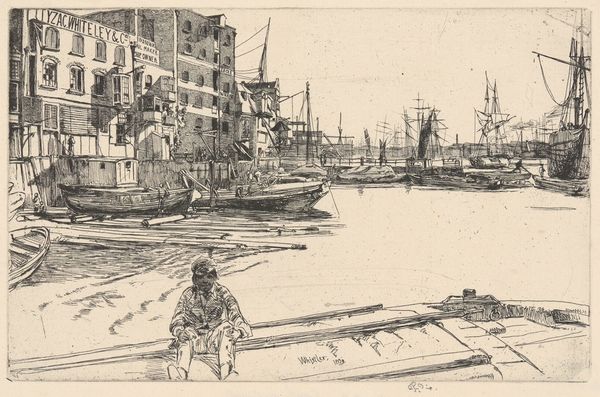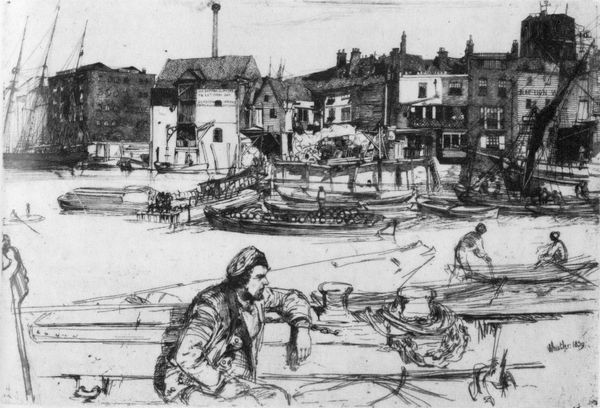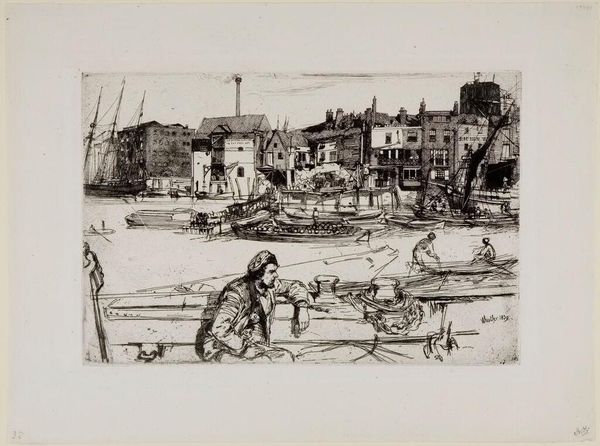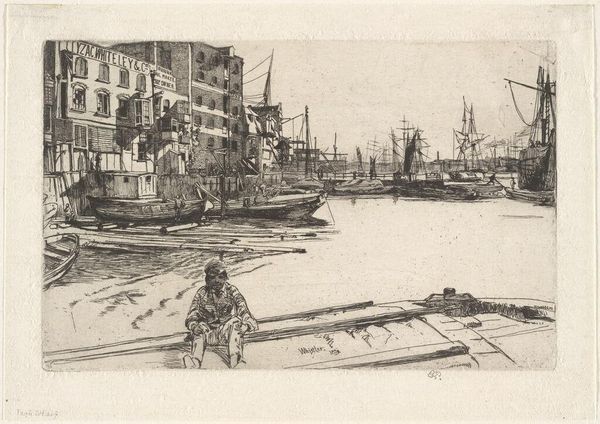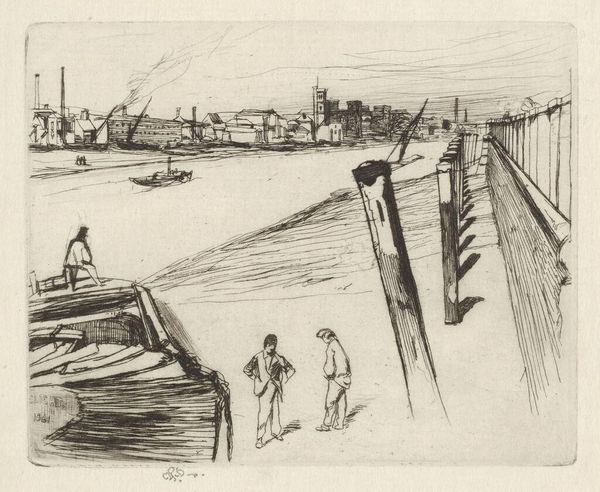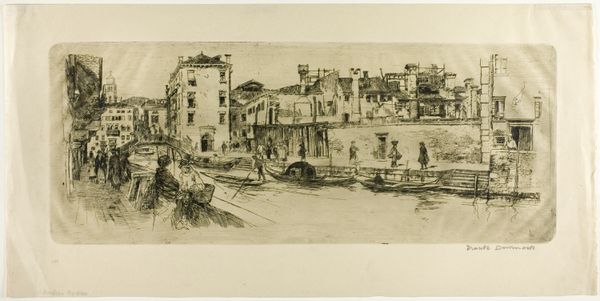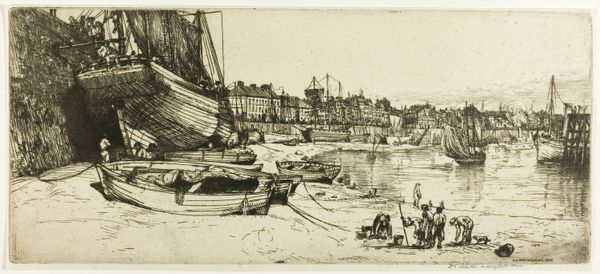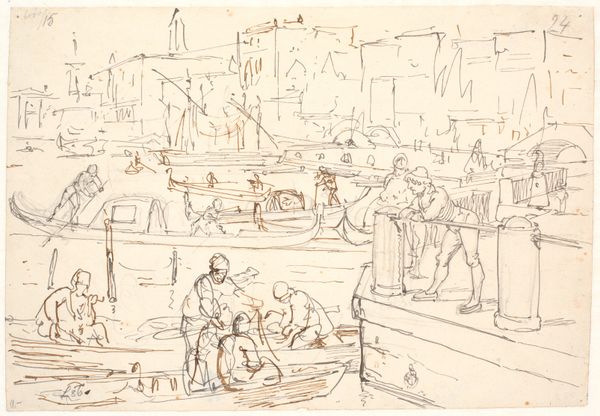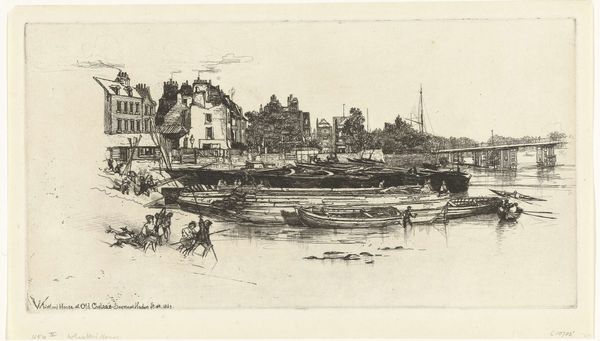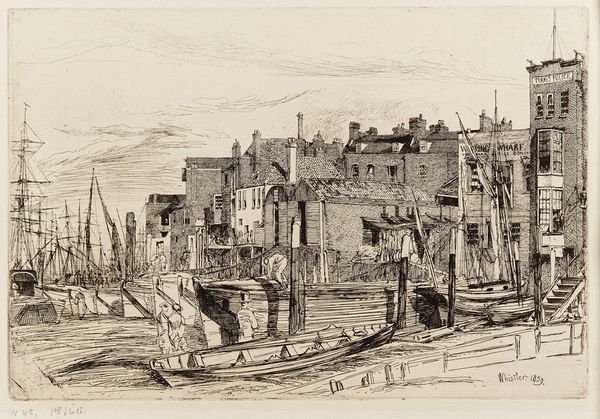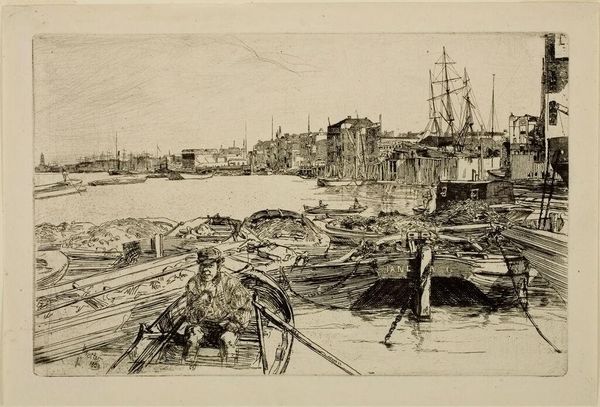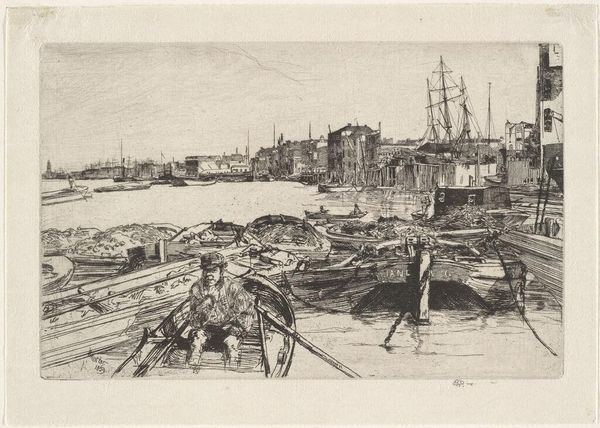
Copyright: Public Domain: Artvee
Editor: So, this is Whistler’s “Black Lion Wharf,” created in 1859. It's an etching, and it's striking how detailed he makes a rather gritty industrial scene. What's your read on this piece? Curator: It’s interesting you call it "gritty," because Whistler presented these Thames views to a public increasingly distanced from the realities of riverside labor. Look at how he gives us glimpses of industry – the signs, the cranes, the workers – but frames it within an aestheticized, almost picturesque scene. How might that framing have shaped public perception of the working class at the time? Editor: That’s a great point. It almost feels like he’s documenting a vanishing world, making it palatable for a different audience. Were these prints widely circulated? Curator: They were intended to be. Whistler was engaging with a broader trend of printmaking, which made art more accessible. Etchings like this allowed people to acquire "art" of London without necessarily commissioning paintings. This democratization also influenced how artists engaged with social realism, carefully choosing what to depict and how. Do you see any clues as to whom Whistler thought his audience would be? Editor: Well, the detailed foreground suggests someone with the time and inclination to appreciate the skill involved. It feels more like observing than participating. And perhaps that distance, that aesthetic appreciation, was part of the appeal? Curator: Exactly. Consider the debates around realism in the mid-19th century – the tension between honest depiction and the potential to shock or offend the sensibilities of the art-buying public. Whistler navigates that tension quite skillfully here, wouldn't you agree? Editor: Absolutely. I hadn't considered the artist's audience, or how it informs his aesthetic choices. Thanks, that gives me a whole new perspective on Whistler. Curator: It also highlights how artistic choices contribute to shaping a viewer’s socio-political understanding, doesn't it? A crucial reminder of the active role art plays in public life.
Comments
No comments
Be the first to comment and join the conversation on the ultimate creative platform.
